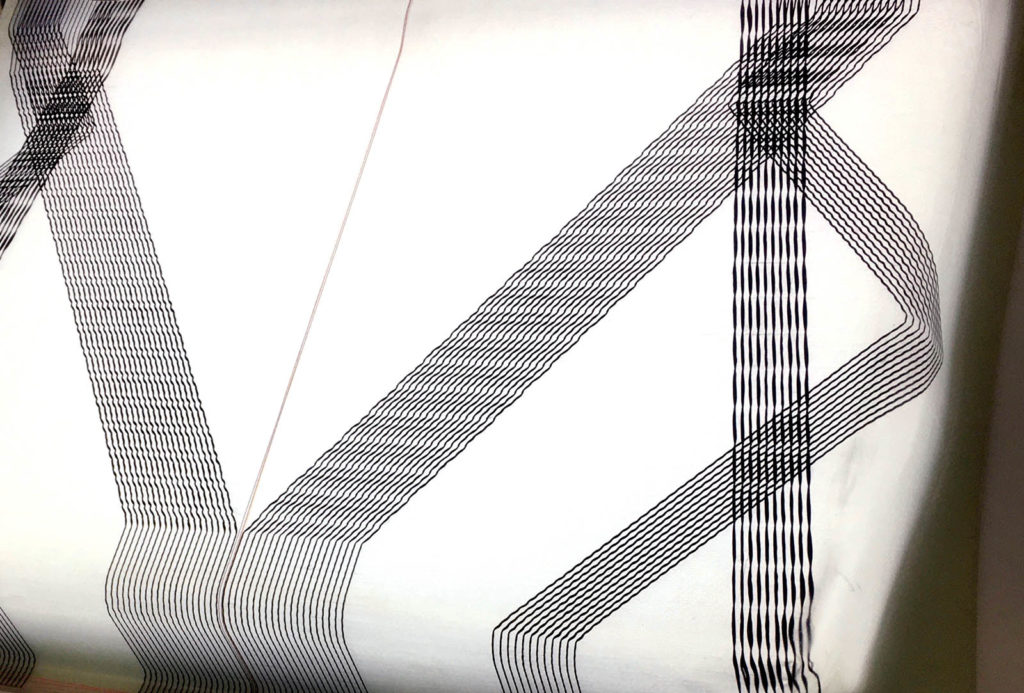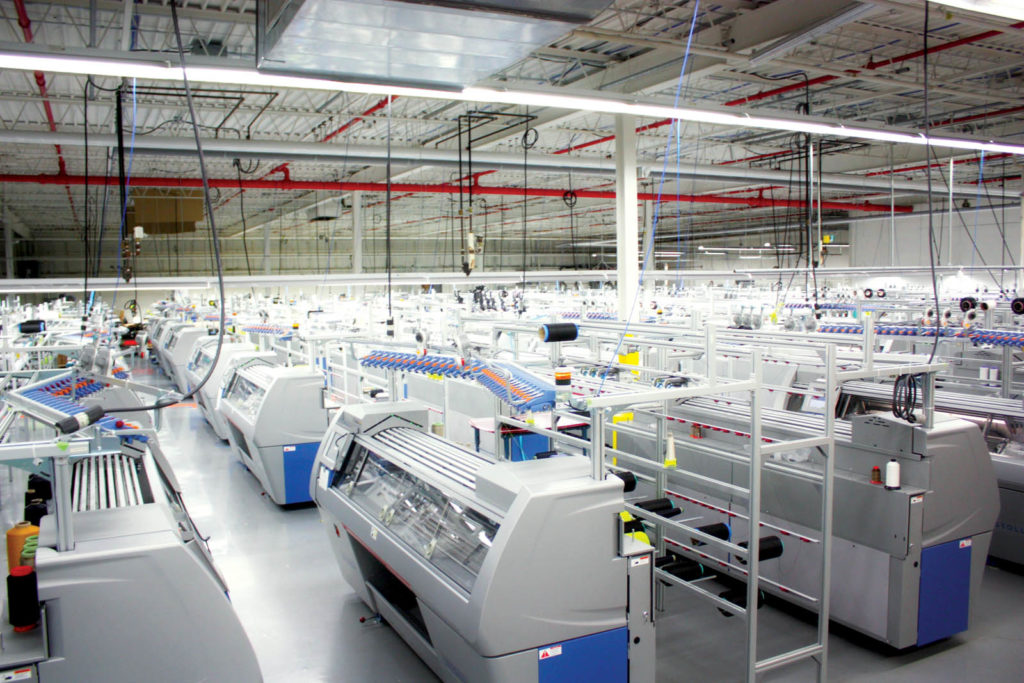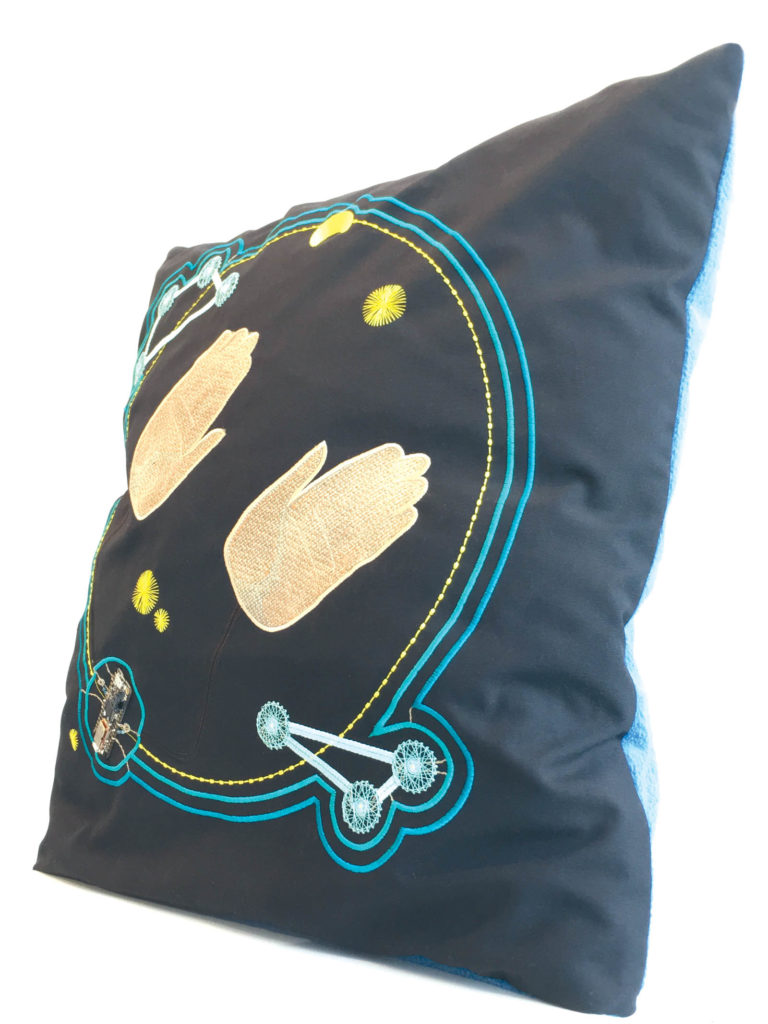
Developments in technical textiles in Germany grow from industry and international partnerships.
By Marie O’Mahony
Globalization “is already behind us,” according to Michael O’Sullivan, author of The Levelling: What’s Next after Globalization (2019). O’Sullivan sees the future as a multipolar world dominated by large regions such as the United States and the European Union.
However, the ability to dominate may be less important than the ability to form partnerships with companies across industries and borders for mutual benefit and advancement. German companies have found synergies across the advanced and technical textiles industry, in some cases with North America-based firms. With the growth of a virtual approach to doing business, such relations are set to increase.
Next-gen vehicles
The Active Research Environment for the Next Generation of Automobiles (ARENA2036) is a German transdisciplinary initiative looking at work, mobility and production in the digitized future of 2036, which also happens to be the 150th anniversary of the automobile. Supported by the German government, this initiative is based in Stuttgart, close to both automotive and textile manufacturers.
Bringing together expertise from automotive, aerospace, textiles and materials segments as well as industrial science, ARENA2036 partners include Daimler AG, Siemens AG, KUKA AG, BASF SE, Royal DSM, Bosch, the German Institutes of Textile and Fiber Research Denkendorf (DITF) and German research organization Fraunhofer. As part of the program, DITF has partnered in the development of a composite designed as a subfloor module equipped with a battery box, integrating a number of functions so that the work steps are reduced to achieve efficiencies amid complexity. Further developments with ARENA2036 partners include a fiber-reinforced plastic composite featuring precise fiber orientation for strength and rigidity only where needed, reducing material use and weight in other areas.

Clustering industries
The German clustering approach to research and development has directly benefited North America, with the BMW plant in South Carolina a case in point. Opened in 1994 in Spartanburg, the mammoth facility has helped revitalize the local textile industry and benefits the regional economy, “creating a snowball effect amplified by BMW suppliers and logistics providers establishing bases nearby,” according to columnist Eric Kulisch writing in Automotive News (2018).
The plant employs 11,000 people on-site, with a statewide employment multiplier of 4.0. The clustering of automotive and textile industries is also reflected in education and training, both vital in building and retaining the next generation of skilled workers.
Nearby, Clemson University’s International Center for Automotive Research (CU-ICAR) offers a graduate department in automotive engineering. Clemson Composites Center (CCC) partners with industry on lightweight sustainable composites. Research projects include the use of bio-
derived cellulose nanocrystals (CNC) to create a lightweight thermoplastic car door while generating less greenhouse gas and offering greater potential for recyclability and environmental circularity. The project partners are the U.S. Department of Agriculture and the BMW Group.

Digital developments
Based in Frankfurt, the Mechanical Engineering Industry Association (VDMA) represents more than 3,000 member companies of mostly small and medium size in Germany and Europe. The VDMA Large Industrial Plant Manufacturers’ Group (AGAB) and PwC Capital Projects & Infrastructure recently produced a benchmark study on the expected market changes in the construction of large-scale manufacturing facilities. The report forecasts a greater emphasis on digital, data-driven services over the next five years.
Dr. Hannes Storch, a member of the management board of Outotec GmbH & Co. KG and deputy spokesperson of AGAB, commented at the report launch, “In this changing environment, skills such as agility and flexibility are becoming increasingly important.” As the German textile industry is increasingly partnering outside its immediate discipline, most notably with artificial intelligence (AI), it is well-placed to make the most of its agility and its ability to work with partners both within Germany and internationally.
Micro textile factories
Germany is home to some of the world’s leading fiber and textile equipment manufacturers, and these companies have an important role to play in strengthening the country’s capabilities in textile innovation.
The Federal Ministry for Economic Affairs and Energy has launched a technology program known as Smart Services World—Internet-based Business Services, which provides funding for 20 smart-services projects. The initiative aims to help developers gain access to markets, build a customer base and increase competitiveness. Each project is directed to build a prototype solution based on networked smart technical systems that will allow data to be gathered, analyzed and used for new services that can be provided through a platform, app stores and other online marketplaces.
One program within the initiative is the Smart Textiles Micro Factory. Micro-factories for clothing production promise an on-demand integrated manufacturing process that is quick, flexible, local and sustainable. The initiative is coordinated by the Institute for Textile Technology (ITA) at RWTH Aachen University, and partners include industry leaders in cutting, electronics, sewing, embroidery, and product design and conception.
Material digitization
The Ministry of Economics, Labour and Housing of the State of Baden-Württemberg launched the MaterialDigital innovation platform in July 2019. A key goal is to provide a common basis for the digitization of materials, including textiles. Included is the development of Digital Twins, the creation of virtual images of a material, component or product. These virtual images could be used to examine the effects of different material properties and design before embarking on full production. This is particularly important for complex materials such as composites as well as innovations in the early stages of development.
DITF and the Natural and Medical Sciences Institute at the University of Tübingen are collaborating within the program to examine the potential for polymer-based nonwovens. The intention is to examine all the materials within the value chain starting with the polymer, the staple fiber production, the nonwoven itself and finally a testing process for the assessment of biocompatibility.
Scaling wearables
“By linking information on processes and materials, the material data room also enables the complete traceability required by the Medical Devices Act,” explains Guido Grau at DITF. Additional capabilities, including the use of AI, allow for examination of the complete process across the value-added stages. This offers greater insights into the relationships between materials, processes and the final product to achieve new knowledge and efficiencies.
German knitting solutions innovator STOLL (recently acquired by the Karl Mayer Group) and Canada’s Myant Inc. began a strategic alliance in 2017, and earlier this year unveiled the Digital Textile Exchange (DTX). The digital manufacturing platform aims to connect the full value chain necessary to wearable technology to produce product to scale and make the technology a more commercial proposition. As Myant sees it, there are many “makers” in the world interested in commercializing connected apparel, but the manufacturing ecosystem has not yet been developed in terms of the materials, processes and standards to empower them.
The partnership with STOLL began as a search for advanced knitting machines but has since developed into a deeper relationship across the whole manufacturing process. Tony Chahine, founder and CEO of Myant, sees a value to the relationship that is both about technology and a way of thinking about manufacturing that is different from the norm in North America. Speaking about the partnership with STOLL and the creation of DTX, Chahine notes that “the ‘culture of making’ has been absent in the Western world for many decades as the off-shoring of manufacturing has become the norm, and that has made it very difficult for innovators to take their ideas from concept to product at scale. With DTX, we are democratizing access to manufacturing ability and creating a set of unified standards to enable innovation in textiles to thrive once again.”
Marie O’Mahony is an industry consultant, author and academic. She is the author of several books on advanced and smart textiles published by Thames and Hudson and is a visiting professor at the Royal College of Art (RCA), London. www.linkedin.com/in/marie-o-mahony-94776836
SIDEBAR: The benefits of international trade
Germany is the largest of the United States’ trading partners in Europe and the sixth largest for the country’s exports, according to the U.S. Department of Commerce. Mary Lynn Landgraf, formerly with the U.S. Department of Commerce and now a senior international trade specialist and independent consultant, is unequivocal in her view on international trade benefits.
“Our first obligation to the American people is to be on the cutting edge of technology,” she says. “Many government agencies have programs to stimulate and support innovation as do our state agencies. If some of the complementary or advanced R&D were being carried out in another friendly country, why would you want to reinvent the wheel?”
 TEXTILES.ORG
TEXTILES.ORG


